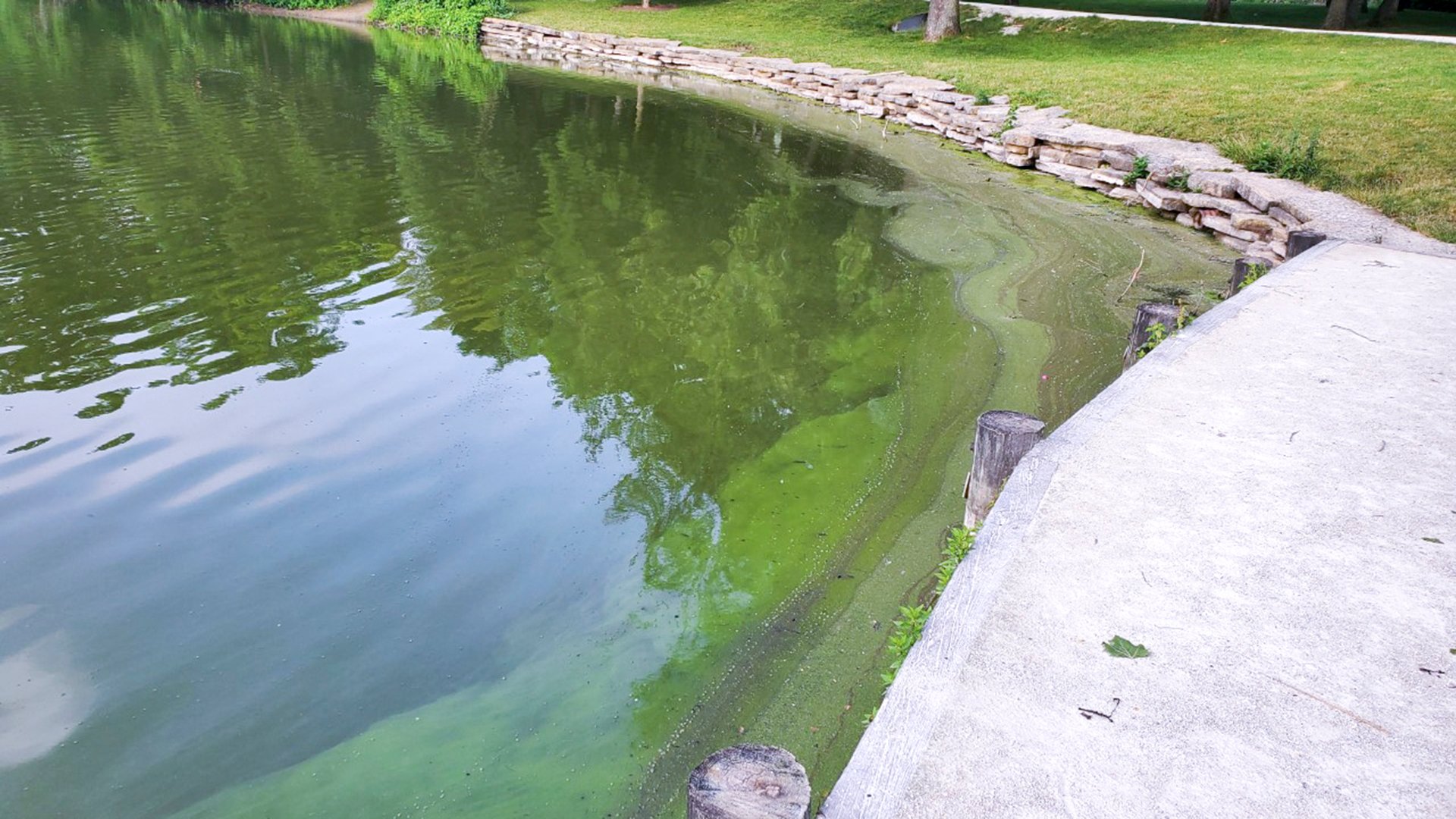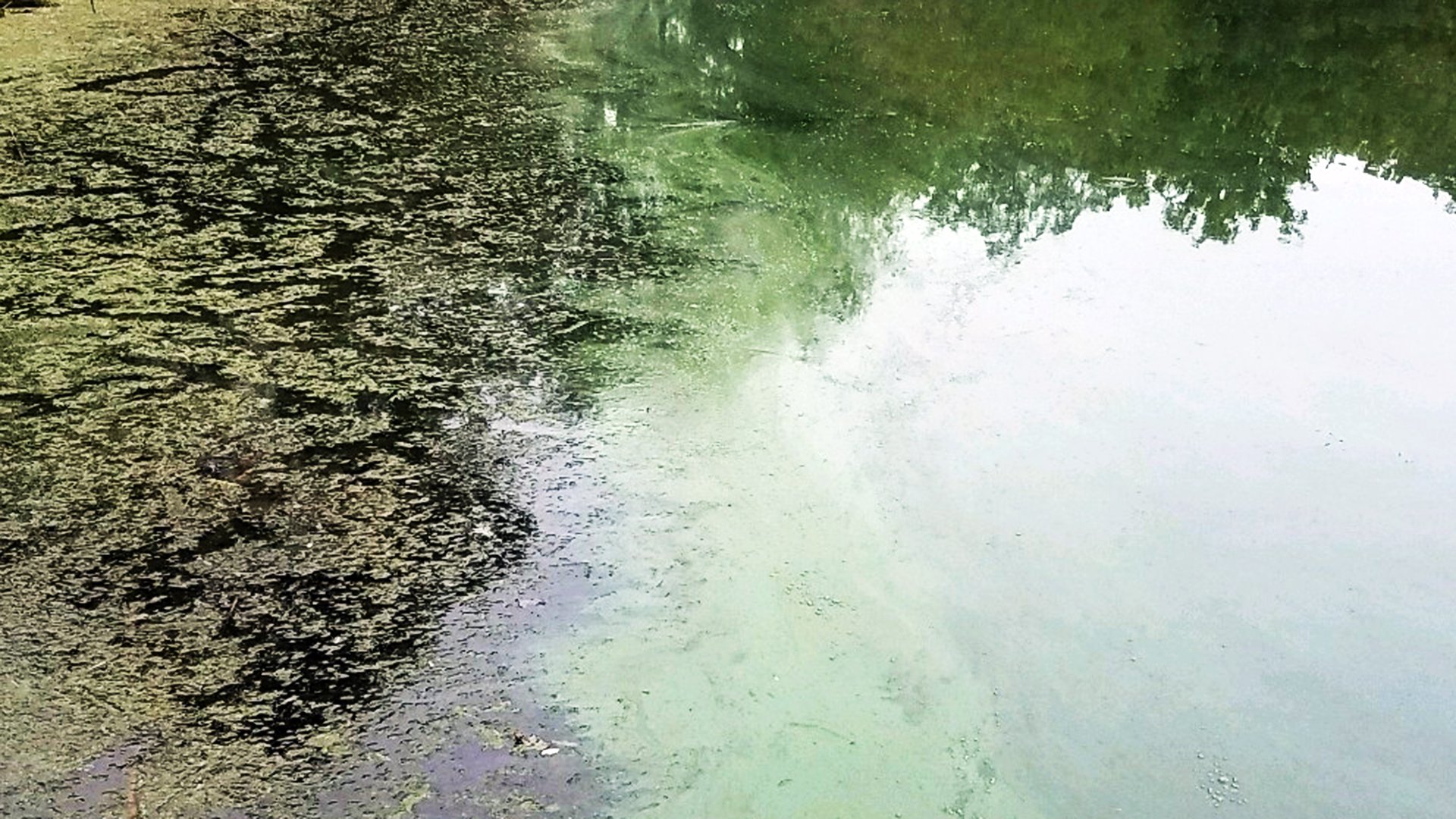
Staying Safe Around Blue-Green Algae
Understanding Blue-Green Algae and Harmful Algal Blooms
Blue-green algae, or cyanobacteria, are a natural part of aquatic ecosystems and are often found in small or moderate amounts in Illinois lakes. They can grow rapidly when warm temperatures, sunlight, and excess nutrients — such as nitrogen and phosphorus, which are common in fertilizers — are present in the water. This rapid growth is called a "bloom," and some blooms can become harmful if the algae produce toxins such as microcystins.
Harmful blue-green algal blooms are a common natural phenomenon that can occur in any body of water. In Illinois, they typically appear between June and September and may look like thick layers of blue, green, or brown scum or paint on the water’s surface. They may also produce a strong odor, especially in warmer weather.
Because it’s not possible to tell by sight whether a bloom is producing toxins, all visible algae blooms should be treated as potentially harmful.
Harmful blooms can persist for extended periods depending on factors such as light penetration, water temperature and flow, pH levels, and the presence of nutrients and trace metals.
Pets, children, and people with weakened immune systems can become sick after ingesting, touching, or inhaling water affected by harmful blooms. Cyanobacteria and their toxins may cause symptoms such as skin irritation, headaches, vomiting, diarrhea, difficulty breathing, neurological effects, and other medical issues.
Protect Yourself and Your Pets
Because it’s not possible to tell whether a bloom is producing toxins just by looking, we encourage the public to take the following precautions whenever a bloom is present:
-
Avoid contact with water that looks discolored or has visible algae or scum.
-
Keep pets away from the water.
-
Wash skin or fur thoroughly if contact occurs.
-
For more information, visit dph.illinois.gov.

Blue-Green Algae Bloom FAQs
No. While blue-green algae are natural, some blooms produce toxins that pose a risk to people or animals. Because you can’t tell by looking, we treat all visible blooms as potentially harmful and encourage caution.
They can, but it depends on the concentration of toxins and how long the bloom lasts. Canines (pet dogs included) are especially vulnerable. If they drink contaminated water or lick algae from their fur, it can lead to seizures, organ failure, and even death.
Other wildlife can also be affected, but incidents are less common. Many wild animals have evolved alongside naturally occurring algae blooms and may instinctively avoid tainted water, especially if it looks or smells abnormal.
No, the Forest Preserve District no longer tests specific waterbodies for toxins (such as microcystins) to confirm whether a blue-green algae bloom is harmful. Instead, we treat all visible cyanobacterial (blue-green) algae as potentially harmful and follow public health guidelines. Staff conduct regular visual inspections to monitor the presence and condition of algae blooms.
To stay safe when a potentially harmful bloom may be present:
-
Avoid touching the water or algae.
-
Keep pets away from the water.
-
If contact occurs, wash skin or fur thoroughly.
-
For more information, visit dph.illinois.gov.
Some measures can help lower the risk of harmful blooms, but once a bloom forms there is little to do but let it run its course. Microcystins are released as algae die, so treating with herbicides can actually increase the level of toxins.
Research suggests it should be safe. Microcystins primarily affect the digestive tracts and livers of animals, so a fish’s muscle tissue (the part people eat) should have low levels. However, handling fish during an active bloom increases the risk of skin exposure and should be limited or avoided.
Boating is typically safe, but always use your best judgment if active blooms are present. Avoid contact with discolored, scummy water, and wash you skin with soap and water or rinse thoroughly with clean water if you do come in contact with the water.
The safest thing is to treat every algae bloom as dangerous. Keep pets out of the water, and do not come in contact with it yourself. If you do, wash thoroughly as soon as possible.